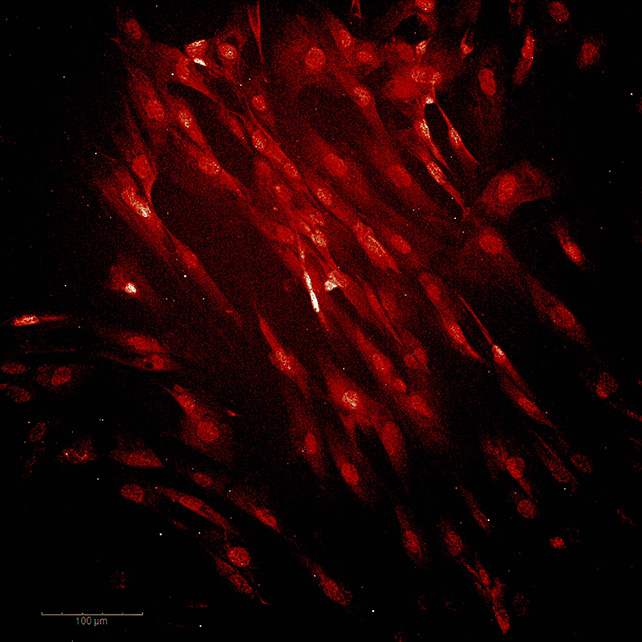Automated single cell quantitative in situ gene expression in cells and tissues (AutoMerFISH)
 Aim
Aim
Image-based approaches to single-cell transcriptomics can quantify both RNA copy number and location in cells and tissues. Recent advances in Multiplexed Error-Robust Fluorescence In Situ Hybridization (MERFISH) allow gene expression profiling of ∼40,000 human cells in a single 18-h measurement. MERFISH thus enables the identification and characterization of rare transcriptionally distinct cell types within a tissue/culture, reveals the sub-cellular location of RNAs, and the relationship between cell position and transcriptome. Here we propose to establish this technology and automate it for the benefit of all UQ researchers, taking advantage of a Perkin and Elmer robotic platform for performing the serial hybridization and imaging steps (AUTO-MERFISH).
Brief project outline
Single cell analysis is transforming biological sciences, providing both unprecedented insight into the identity and transcriptional make-up of often rare cell types, as well as revealing the surprising heterogeneity within one cell type/lineage. However, because scRNAseq requires single cell dissociation the spatial relationships between cell location/morphology and their individual transcriptomes is lost. Furthermore, scRNAseq does not provide information about the location of mRNA within a cell. MERFISH overcomes these drawbacks.
Genomics-based innovative aspect of proposal
We intend to tap into the expertise of GIH for the design, generation and quality control of the barcoded probes. We further anticipate that GIH will be able to assist in the bioinformatic deconvolution of the data and their comparison with scRNAseq data sets.
Broad applicability of the technique
This technology should be of great interest to any researcher studying development, disease processes, cancer, cell migration, brain physiology, or ageing, and is adaptable to any species. MERFISH can be used on tissue sections mounted on slides (and this is also accommodated by the automation rig), on cultured cells, and organoids. We intend to advertise and provide advice and access to the automation protocol. External users can however also opt to build their own micofluidic device or perform the hybridizations manually to minimize costs if so desired. To our knowledge MERFISH is not performed by anyone in Australia at present, offering excellent opportunities for collaboration and funding requests.








